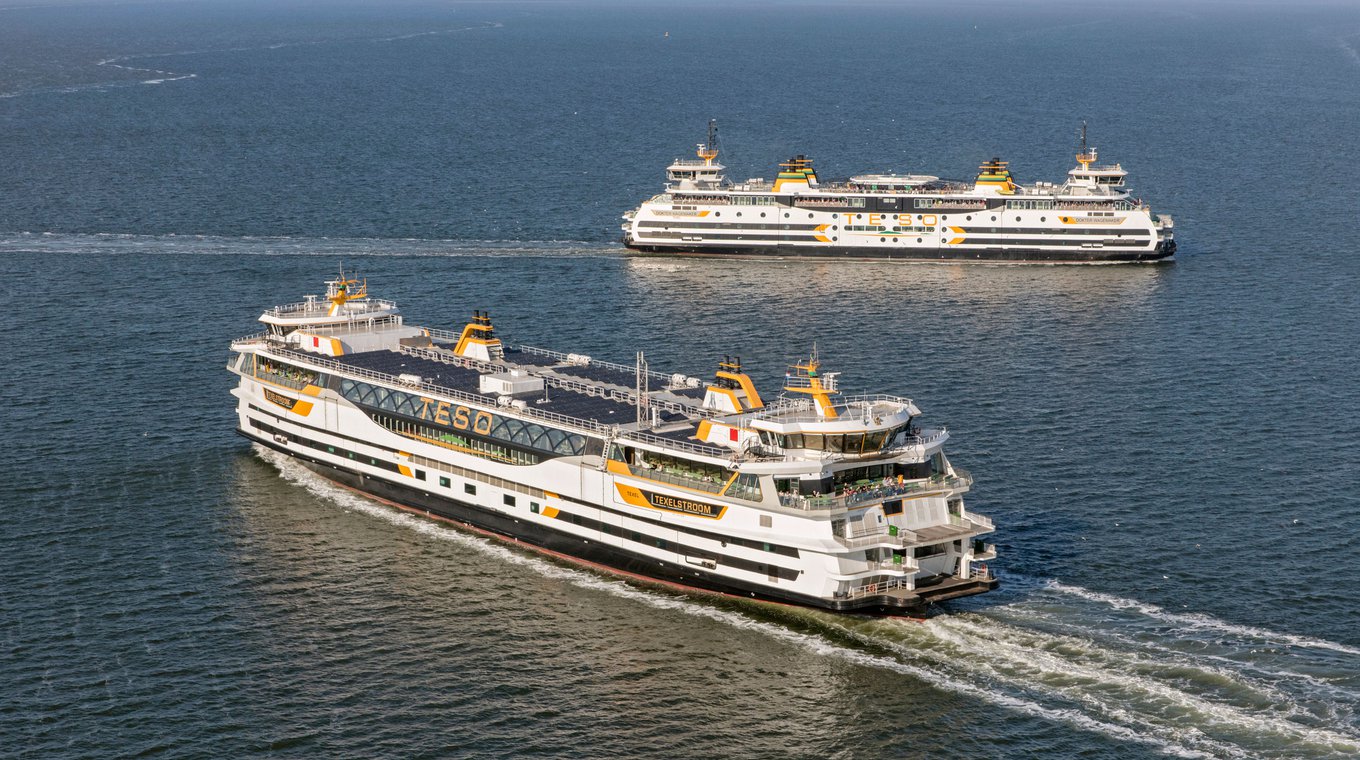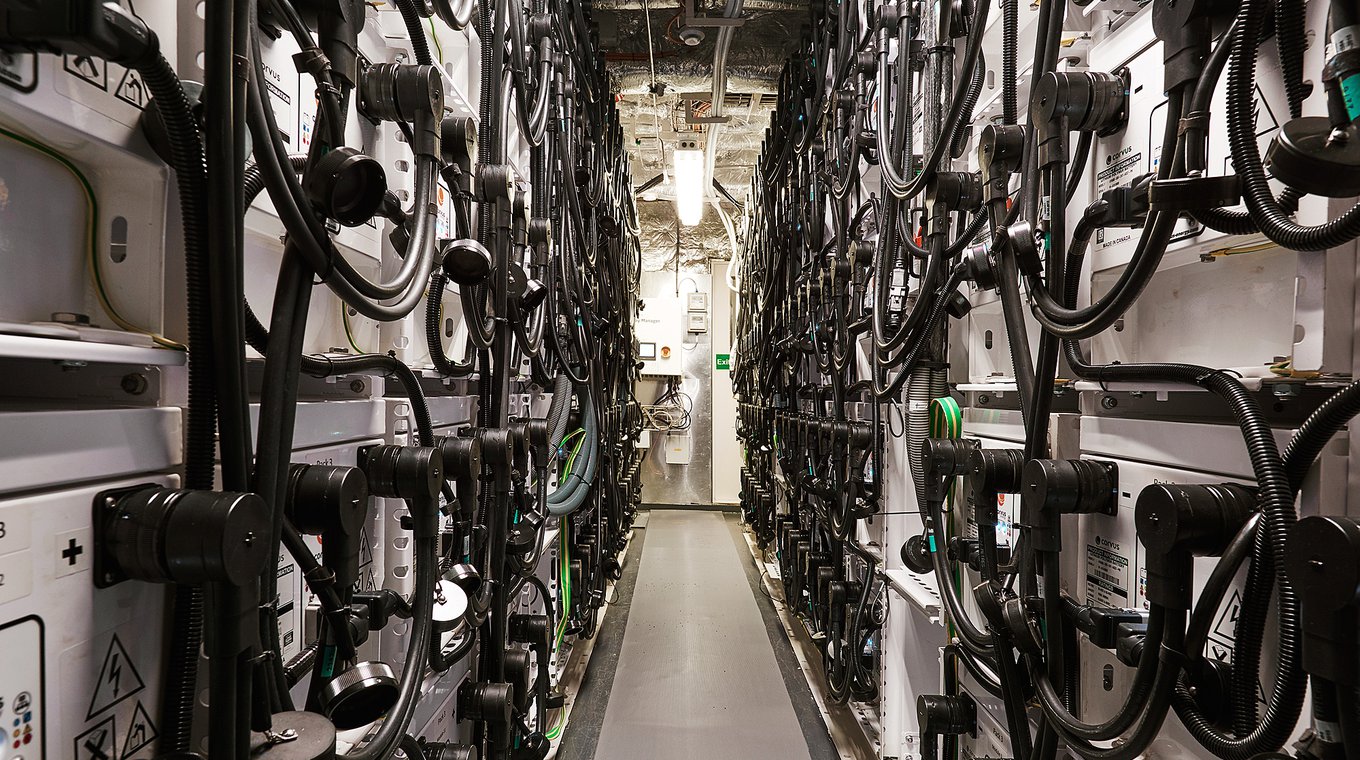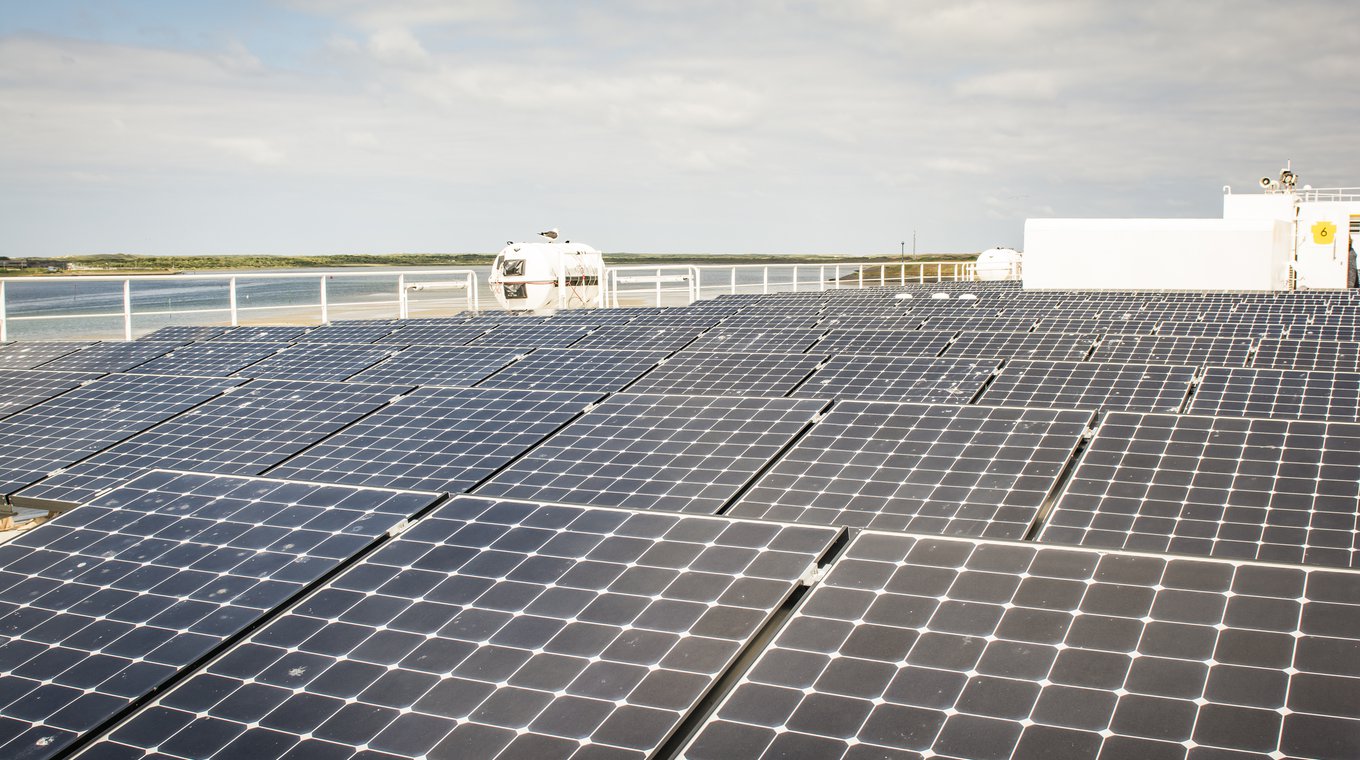TESO sails through the Wadden Sea every day. The Wadden Sea is World Heritage, a beautiful but vulnerable nature area. Therefore we want to treat it with care. We want to help maintain the natural variety of this attractie area.

TESO’s vision reaches beyond today and tomorrow. Therefore we put a lot of effort into sustainability. One example is the use of environmentally and climate friendly fuels. In 2007 we were the first shipping company in the world to use the relatively clean GTL diesel. Furthermore we use green shore side power generated by TexelEnergie. The Texelstroom is fuelled primarily by gas complemented by batteries and generates her own energy even while sailing with 462 solar panels on the top deck. But we do not stop there.
Less fuel and less emission
Various adjustments have led to huge fuel savings. An overview over the most important results.
Thirty percent more CO2 neutrality
Since 2008 TESO has managed to increase CO2 neutrality by 30% due to the use of biodiesel and the fuel additive Soltron.
Eco-friendly mooring system
Since 2013 TESO has used an eco-friendly mooring system, also known as Automooring System. The mooring system uses robots to keep the ferry in the harbour in place with vacuum pads, so that engines can be switched off during loading and unloading. Due to the system the air quality in the Wadden Sea area has improved. Furthermore, TESO boasts a monthly saving of 15,000 litres of fuel.
Savings through nanotechnology
In order to save even more fuel we add a small quantity of the additive XMILE to our diesel. XMILE is a product that extracts enzymes from tree leaves. It is an additive of natural origin acting bio-chemically. XMILE delivers a much improved combustion process of the fuel in the cylinders of the diesel engines. This way we save about 140,000 litres of diesel fuel each year. Not only do we reduce our fuel consumption, we also reduce CO2 emission by 6% and NOx and CO (carbon monoxide) emmission by 9% and 32% procent and the emission of soot particles by no less than 40%. Less NOx, CO and soot is important for your everyday lives; less CO2 will play a role for the coming generations. By using XMILE TESO aims to create a more sustainable environment for today and for the future.

Green shore power
Our ships operate with green shore power. Green shore power implies that the diesel generators do not have to be operated during the overnight mooring in the harbour of Texel. The diesel generators used to supply the ships with electricity overnight. The electricity is now being supplied by green shore powered delivered by TexelEnergie.
Green shore power is a sustainable solution offering many advantages. We save fuel and therefore emit less exhaust fumes. Overnight we do not emit soot particles nor fine particulate matter.

Ships and marine scientific research
Our ships also contribute to marine scientific research in Cooperation with NIOZ, the Royal Netherlands Institute for Sea Research. TESO ships cross the sea gate Marsdiep several times each day. It offers a unique opportunity for gathering data about the Wadden Sea and the Marsdiep without NIOZ having to sail every day. Attached to the TESO ships there are measuring devices that help NIOZ collect data.
Acoustic Doppler current profilers
The acoustic Doppler current profilers measure the direction and the speed of the water at various depths using sound signals. At the same time the quantity of sludge floating in the water can be measured and the elevation of the ground beneath the ferry can be charted. On the basis of this data researchers of the NIOZ can determine quite accurately how much water and sludge is being exchanged between the North Sea and the Wadden Sea. One of the results of the research was the discovery that two to three metre high sand dunes seem to run through the Marsdiep.
Sensors for measuring temperature and salinity
The sensors underneath the ferries measure the temperature and the salinity in the sea. It appears that temperature and salinity of the water can vary considerably, even from one crossing to the next.
Licht meters to measure the quanity of plankton
Five light meters measure the colour of the seawater, of the sky and of irradiated sunlight (so-called hyperspectral radiometers). By measuring the colour of the seawater the quantity of floating particles and plankton can be determined: plankton colours the water green, dead plankton colours the water brown.
On the video screens on board the ferries you can watch some of these data during the crossing. Would you like to know more about the measurements and the importance of the measured data? Please read more on the NIOZ website.